Information Technology Reference
In-Depth Information
x 10
−5
k=0.2
k=0.5
k=0.9
4
3.5
3
2.5
2
1.5
1
0.5
15
0
3
10
2
j
1
5
0
x 10
−3
Shapley value
Fig. 3.
A small player's Shapley value and uncertainty for a varying weight
x 10
−3
k=0.1
k=0.5
k=0.9
3.5
3
2.5
2
1.5
1
0.5
1000
0.02
500
0.01
0
0
Quota
Shapley value
Fig. 4.
A large player's Shapley value and uncertainty for a varying quota
The accuracy of the proposed method depends firstly on
X
. We know from [2], that
the inaccuracy in Equation 10 decreases as
X
increases. Consequently, the inaccuracy
of the proposed method decreases with
X
. The second source of inaccuracy is
>
0
.It
is obvious that the closer
is to zero, the higher the accuracy. Thus, the inaccuracy of
the proposed method increases with
.
We now analyse the relation between the Shapley value and its uncertainty. From the
above equations, we know that the Shapley value and its uncertainty depend on three
parameters: the number of players (
m
), the weight associated with each large party
(
j
), and the quota (
q
) for the game. Thus, we systematically vary these parameters in
order to study the relation between a player's Shapley value and its uncertainty. These
parameters are varied as follows. We varied
k
between 0
.
1 and 0
.
9. This is because we
want multiple large and multiple small players, and for a large
m
, this range for
k
gives
us that. For each
k
, we varied the parameters
m
,
j
,and
q
such that the following two
constraints are satisfied:
C
1
No player can win an election on its own (i.e.,
j<q
).
C
2
The maximum number of parties required to win an election is less than the total
number of parties (i.e.,
q<mkj
+(1
−
k
)
m
).
Thus, for each
k
, we determined the Shapley value and its uncertainty for different
values of
j
and
q
that satisfy constraints
C
1
and
C
2
. This entire set of variations was
repeated for different values of
m
.


















































































